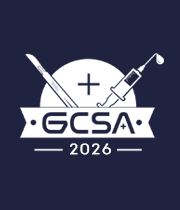Ophthalmic Surgery
In an area where millimeters matter, ophthalmic surgery relies on cutting-edge precision and real-time visualization to restore or preserve vision. From cataract extraction to corneal transplantation and retinal detachment repair, the scope of interventions has expanded significantly. Femtosecond lasers, microincision instruments, and robotic-assisted systems are redefining what can be accomplished within the confined anatomical space of the eye. Surgeons now employ intraoperative OCT and 3D heads-up displays to enhance accuracy during delicate procedures. Minimally invasive glaucoma surgeries (MIGS) and implantable intraocular lenses continue to improve long-term outcomes and reduce dependence on medication. With growing patient demand for faster recovery and better refractive results, ophthalmic procedures are becoming increasingly tailored, outcome-driven, and technologically sophisticated, making vision preservation a more achievable goal across a broader population.



Title : Spontaneous colonic perforation in a pediatric patient with acute febrile lllness: A case report
Abhiraj Yadav, Manipal College of Medical Sciences, Nepal
Title : Unusual cause of small bowel obstructions in infants: A warning letter to parents
Gamal Al Saied, Al-Azhar University, Egypt
Title : From panic to protocol: A ?IP on developing a paediatric breast referral pathway
Neriah Mangion, University Hospital Sussex NHS Foundation Trust , United Kingdom
Title : Improving scrotal examination in male patients presenting with acute abdominal pain: An audit and quality improvement intervention
Maab Elsaddig, University Hospital Lewisham, United Kingdom
Title : Mapping pediatric general surgery training in low and middle income countries: A scoping review
Habba Mahal, University of Alberta, Canada
Title : Improving implementation of enhanced recovery after cesarean section protocol in resource limited setting of Koidu Government Hospital Sierra Leone 2024/25. A quality improvement project from evidence to reality
Hailemariam Getachew, PIH, Sierra Leone